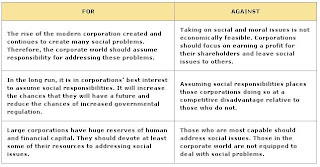Kerosene - Petroleum
Read it as an addendum to the article in the e-book
How is kerosene produced?
How is kerosene produced?
Petroleum or crude oil is the liquid which comes straight out of the oil wells. This liquid is of little use because it is a mix of various hydrocarbons each having a different boiling point and ignition temperature and hence it is necessary to separate them for efficient use. The separation is done by a simple process known as fractional distillation. These hydrocarbons have progressive boiling points, so they can be easily separated by distillation — heating the oil and pulling out different products at different vaporizing temperatures. Using this method, liquefied petroleum gas (LPG), petrol, kerosene, diesel and lubricating oils are separated from each other. The residual is processed to extract asphalt, tar and wax.
How are petroleum product prices determined in India?
India has to import about 80% of its total crude oil consumption. Given the high volatility in international oil markets, the government continues to control prices of petrol, diesel, kerosene and LPG despite past attempts to decontrol them.
The pricing is based on the presumed users of various products. Petrol, for instance, is an item of final consumption and hence an increase in its price will have little impact on inflation. So there is little pressure to subsidize it. Diesel, on the other, is a product whose price will have an impact on inflation as it is widely used. Trucks account for about 37% of diesel consumption and another 12% is used for agricultural purpose. The railway is also a key user.
Kerosene is subsidized and the objective is to provide light for the poor as it is estimated that 60% of kerosene consumption is for lighting purposes primarily in rural areas.
LPG is also subsidized. The subsidy is aimed at promoting a cleaner source of energy rather than using firewood or dung cakes, which not only add to pollution.
Why do some people oppose the subsidy?
Various studies have shown about 35-40% of PDS kerosene never reaches its target. This diverted kerosene is used for adulterating diesel. Diversion means the government is not only subsidizing the petroleum mafia, but the adulterated diesel is also increasing the carbon footprints of the country. A lesser price difference would reduce these practices. Calculations show at current price level of crude oil, which is about $92/barrel, the price of petrol should be Rs 55.61, diesel Rs 43.76, kerosene Rs 34.23 and LPG about Rs 575.42/cylinder. Petrol is, however, being sold at higher prices while the rest are subsidized. Kerosene is sold at Rs 9.23/ litre, so the oil mafia uses it to adulterate diesel.
What has been done to check diversion of PDS kerosene?
The first attempt to detect the diversion of PDS kerosene was in the 1980s, when the government introduced a blue colou-rant in PDS kerosene, but petrol pump owners discovered a neutralizing chemical and the scheme had to be withdrawn. In 1989, a coupon system was introduced in Mysore. The consumer was to give the coupon to the dealer, which the dealer had to submit to authorities in order to get paid. The system was withdrawn for unknown reasons. In 2005, GPS were fitted on delivery tankers to check diversion, but to no avail. In 2006, another imported dye was used to check diversion, but pump owners discovered that addition of a natural clay made the dye useless and the scheme was pulled out. Hopefully, diversion will really dip after UID-based smart cards are put into effect.

Comments
Post a Comment